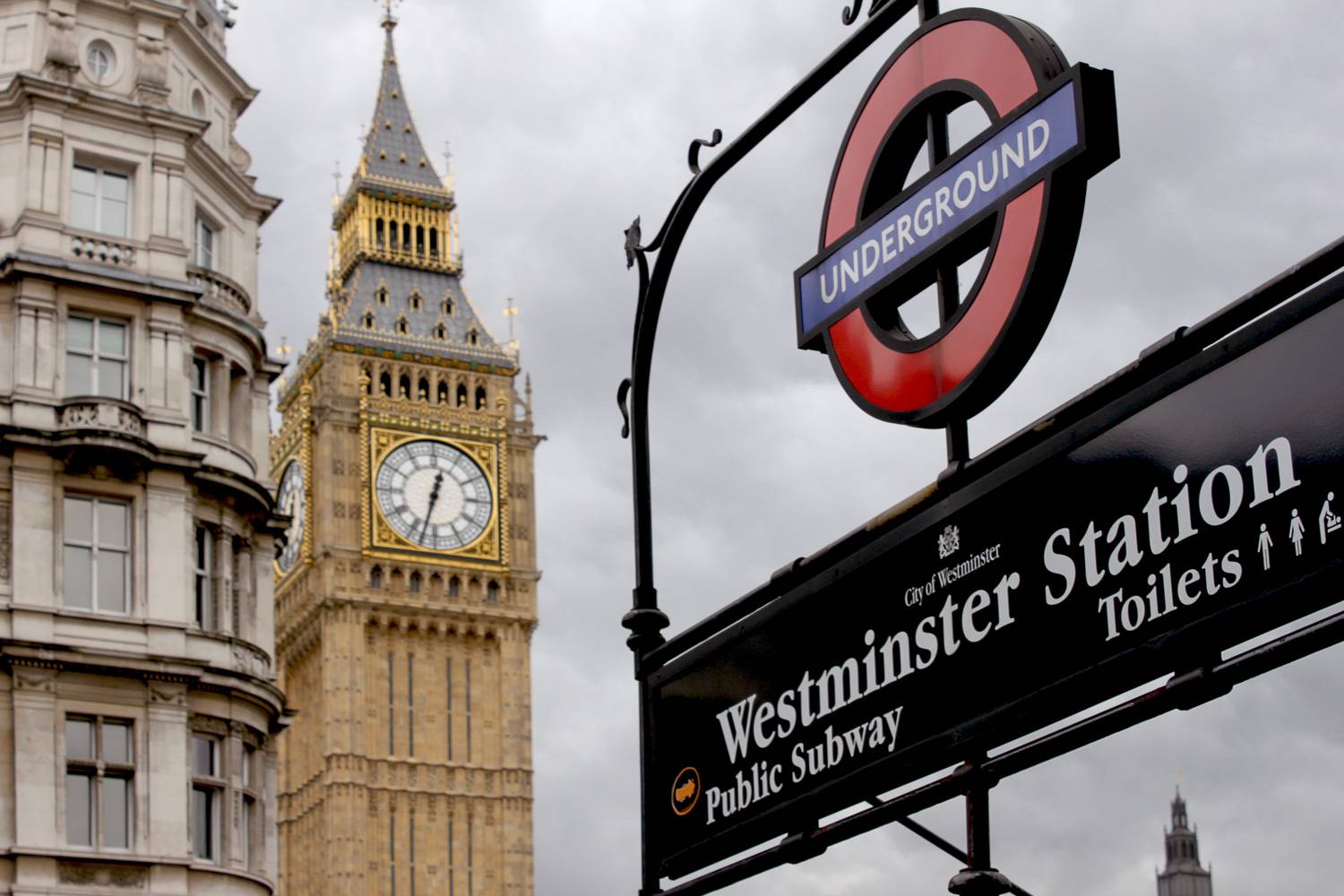
The London Underground is a vital fixture of the city that’s here to help you get around.
If you’re renting a furnished apartment or vacation rental in London, one of the most essential things you can do to make your experience as immersive and efficient as possible is to master the city’s public transportation! London is a large city with plenty of sprawl throughout Greater London and the suburbs, but fortunately, the English capital’s transportation system is comprehensive enough to keep every part of the city connected.
In order for you to master London’s public transportation, our guide is here to help you understand the options available, how to use them, and the pros and cons of each. From the London Underground to the city’s iconic red buses, the city’s transportation can help you get where you need to go—but first, you need to know where you’re going! Before you arrive, make sure you have your accommodations (a furnished apartment, vacation rental, or corporate rental) booked. Renting with a licensed agency like New York Habitat can help make sure you don’t face any unpleasant surprises.
If you’re coming to London from abroad, make sure to also read our guide to how to get from London’s airports to the city!
Paying the fare
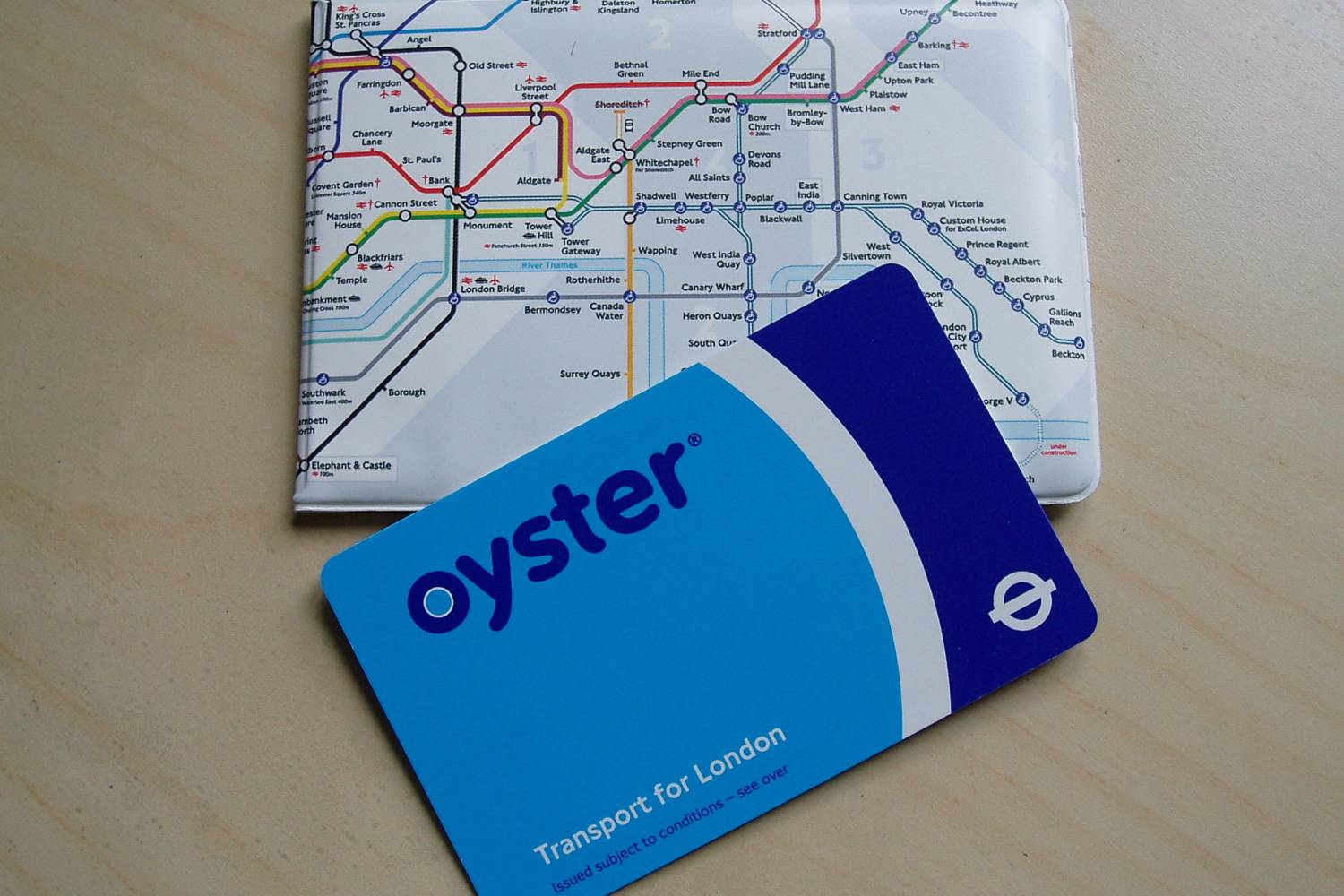
The Oyster card is a revolutionary travel card that lets you access London public transportation on a variety of plans. (Photo credit: Amanda Slater)
First thing’s first: You won’t get very far in London if you don’t have the correct public transportation fare. London’s public transportation system is fortunate to have a user-friendly payment system in place via the Oyster card. Oyster cards are electronic smartcards that are used to pay for almost all public transportation in London. The cards are akin to an electronic wallet and can hold various “tickets” and pass types.
Oyster cards are available for purchase at any London Underground, Overground, and select DLR rail stations (more on all of them later!). Oyster cards incur a £5 deposit that is refundable at any time, as cards never expire but will become void upon return of the deposit. If you live in the United Kingdom, you can also purchase an Oyster card ahead of your visit by mail for £5 plus the cost of postage.
Oyster cards function with different transportation plans, including pay-as-you-go plans in which you can add credit (money) to your card as you need it and season tickets valid for unlimited travel for a week or longer, depending on type. For security purposes (as the card is linked to the user’s bank account), all cards can be registered upon purchase to protect against loss or theft. Also available are Visitor Oyster cards, which might be a great option if you’re on a short-term holiday in London. Visitor Oyster cards can be purchased at any Visit Britain office and online, though they can’t be registered to the user in the way that a regular card can.
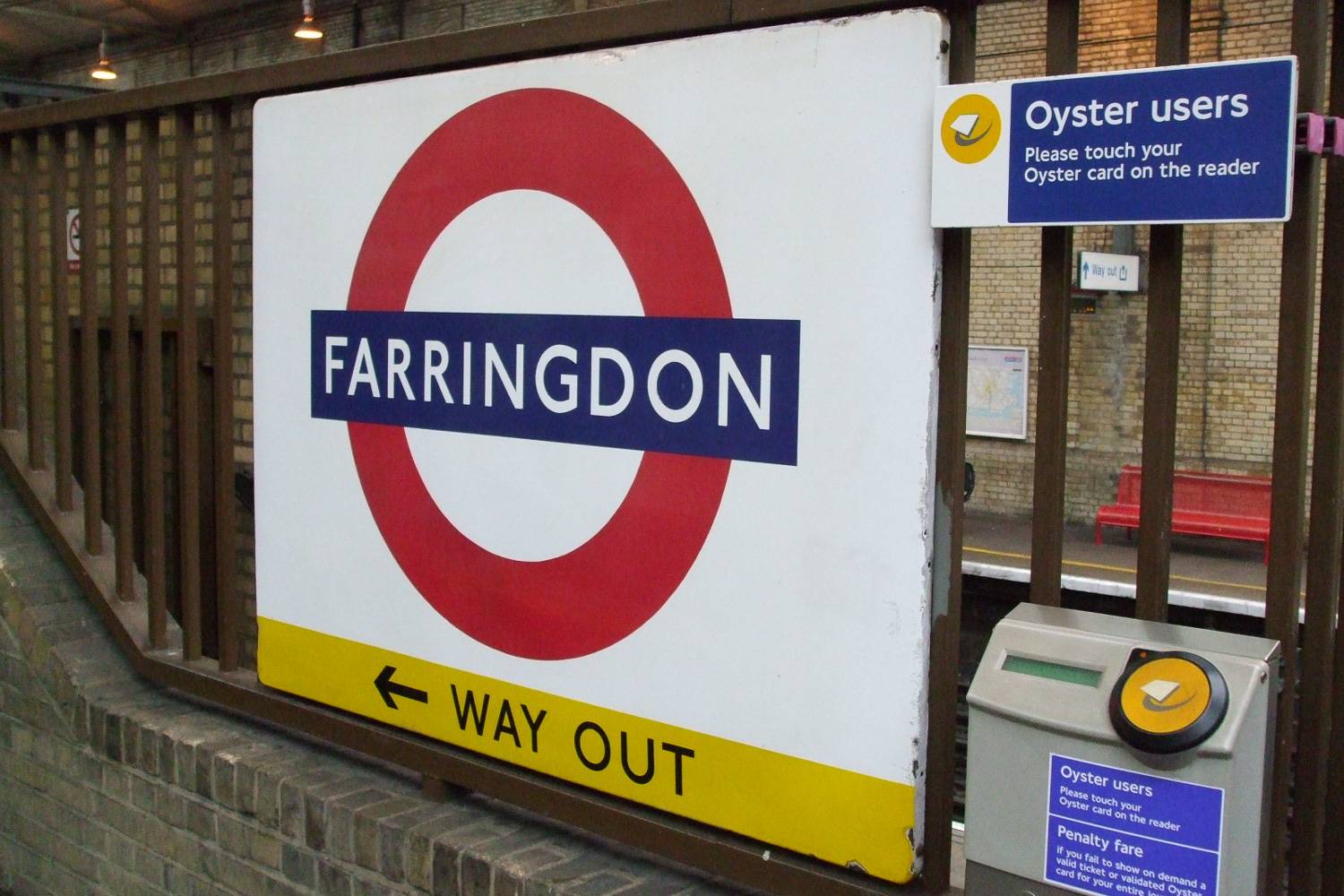
Yellow Oyster card readers are easily visible at the entrance to all Underground stations.
To use an Oyster card, touch the card to the yellow pads at the entrance of all Underground and DLR stations, tram stations, and bus ticket machines. On buses and trams, it is not necessary to touch the card at the end of your journey, but on any train, you must touch the card again as you exit to avoid paying the maximum fare.
Travelers on London’s public transportation can also use contactless payment methods like Apple Pay or Google Pay on their smartphones. Contactless payment incurs the same fares and rates as an Oyster card and involves the same touch-in, touch-out method, but an initial charge of 10 pence is charged to the card upon touching in, and is included in the fare upon touching out.
London Transportation: The Underground
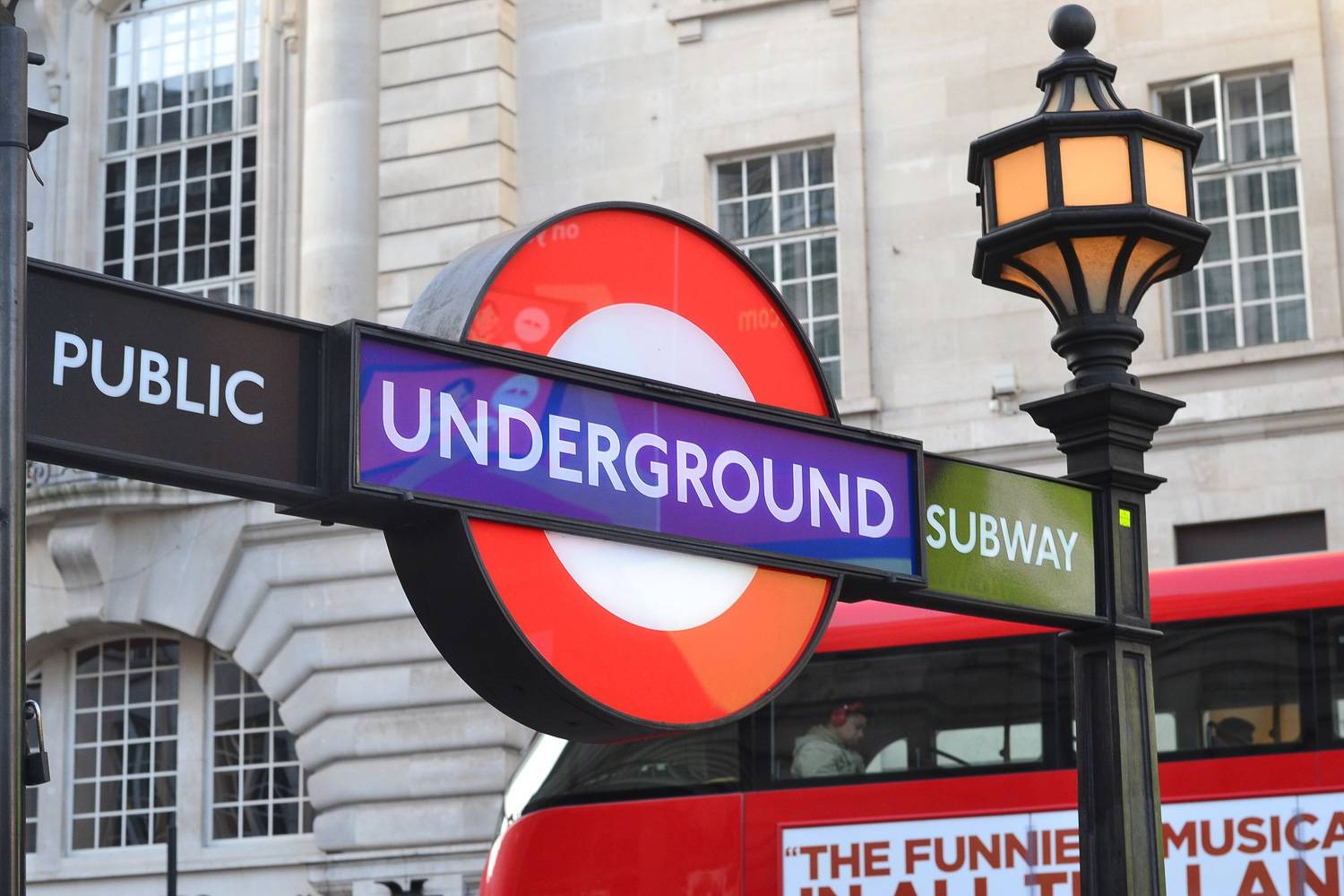
The London Underground’s iconic red-circle design is instantly easy to spot at station entrances around the city. (Photo credit: nadinlisa via Pixabay)
The London Underground (also known simply as the Underground or Tube) is instantly recognizable by its circular red-and-blue logo. Perhaps it’s so iconic because it transports around 5 million passengers per day and was born from the world’s first underground passenger railway! The Underground system is so extensive that it covers not only Central London, but Greater London and even five stops outside Greater London as well. Only six of London’s 32 boroughs are not served by the Underground.
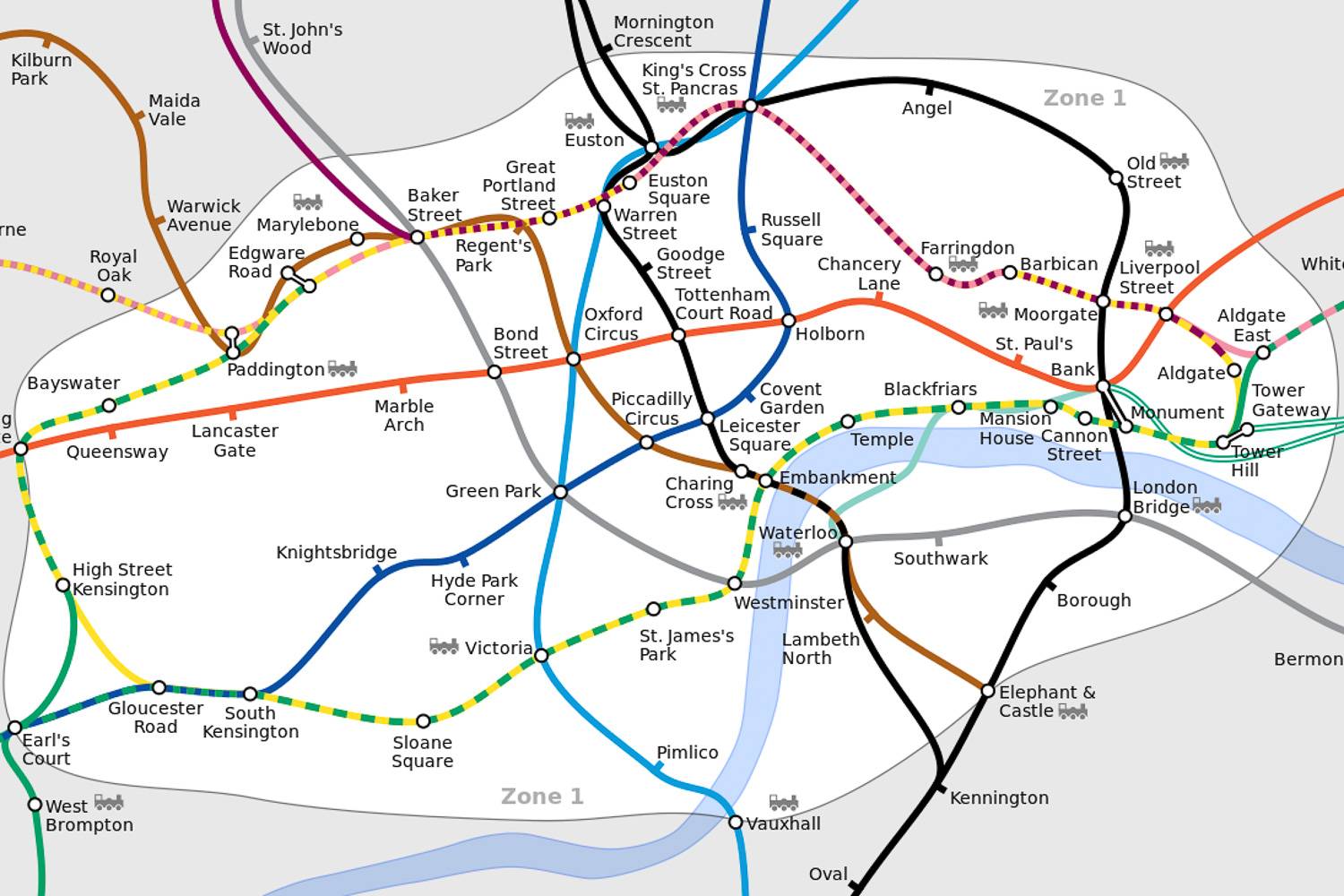
These major stations and Underground lines are all contained within fare zone 1. (Note: this is not a complete map of stations within zone 1).
The system consists of 11 lines and, similarly to the Paris Métro, is divided into 9 zones that determine the fare for a single journey. Most of Central London is contained within zone 1, as you can see on the map above. Fares vary based on the zone to which you travel from zone 1, but as of August 2019, the base fare for travel within zone 1 is £2.40 with your Oyster card or contactless payment (individual tickets or cash payments are £4.90, so it is much more economical to use a card). Children under age 11 ride the Underground for free!
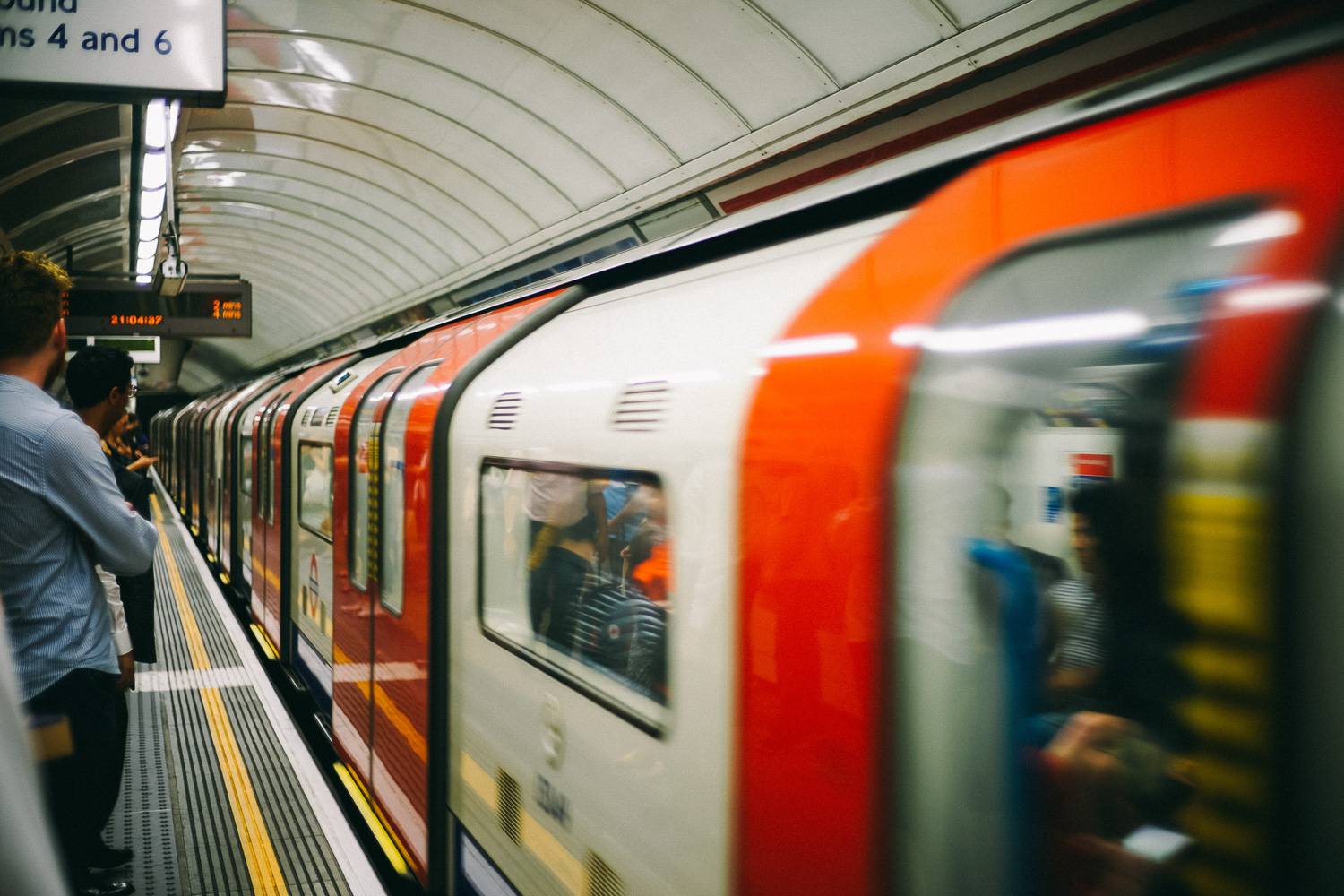
The Underground or Tube is one of the most popular and speediest ways to travel around London. (Photo credit: Josh Wilburne via Unsplash).
Travel via the Tube is fast and efficient, especially if you’re sightseeing within Central London. However, it’s important to keep in mind that the Underground does not run 24 hours per day. Generally speaking, Tube transport is available from 5:00 a.m. until midnight daily. If you’re staying out late in London or exploring the nightlife in popular neighborhoods like Soho or Camden Town, alternate transportation like a London bus might be your best option.
London Transportation: Buses
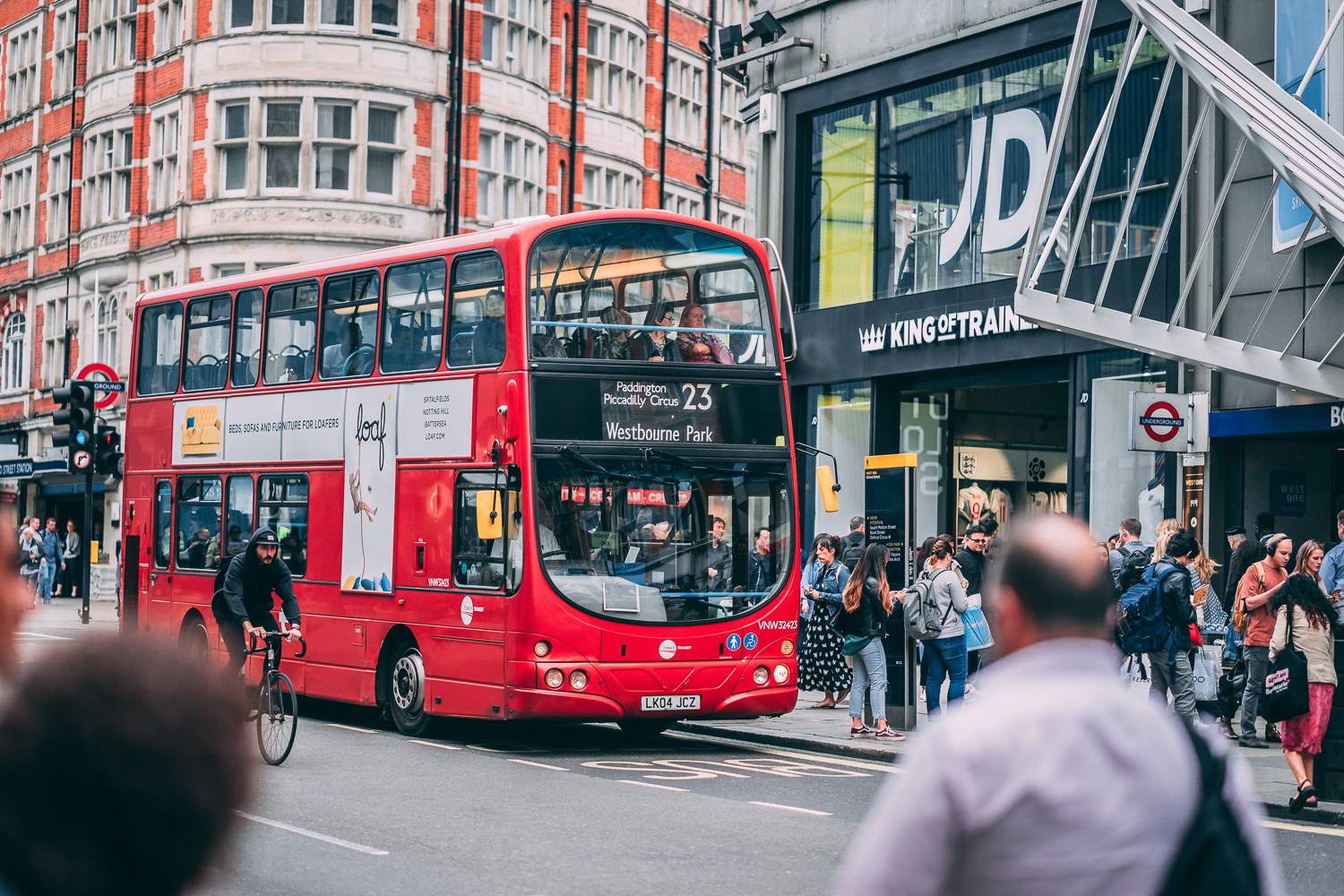
London’s buses have become a famous icon of the city, but are also a comprehensive way to travel through Central and Greater London. (Photo credit: Jonathan Chng via Unsplash)
Though they may not be quite as fast as the Tube, London’s buses are another efficient way to travel and can be a great option for those vacationing in the city because of their unique ticketing system. A bus fare is a flat rate of £1.50 no matter how far you travel, and you will not be charged more than £4.50 (for more than 3 journeys) per day! You can make unlimited transfers between buses or buses and trams within 1 hour of touching your Oyster card, and as we mentioned, there is no need to “touch out” your journey.
It’s important for travelers to know that buses do not accept cash for fares. You must use an Oyster card or contactless payment to pay. As with the Underground, children under 11 travel free, and so do elderly or disabled passengers. All buses are equipped to be usable by those with mobility aids like wheelchairs! Because of their iconic double-decker design, London buses can be great for short trips between different attractions within the city and allow you to see the city while you travel. Plus, they’re so famous; some might consider the bus rides themselves to be something you must experience in London!
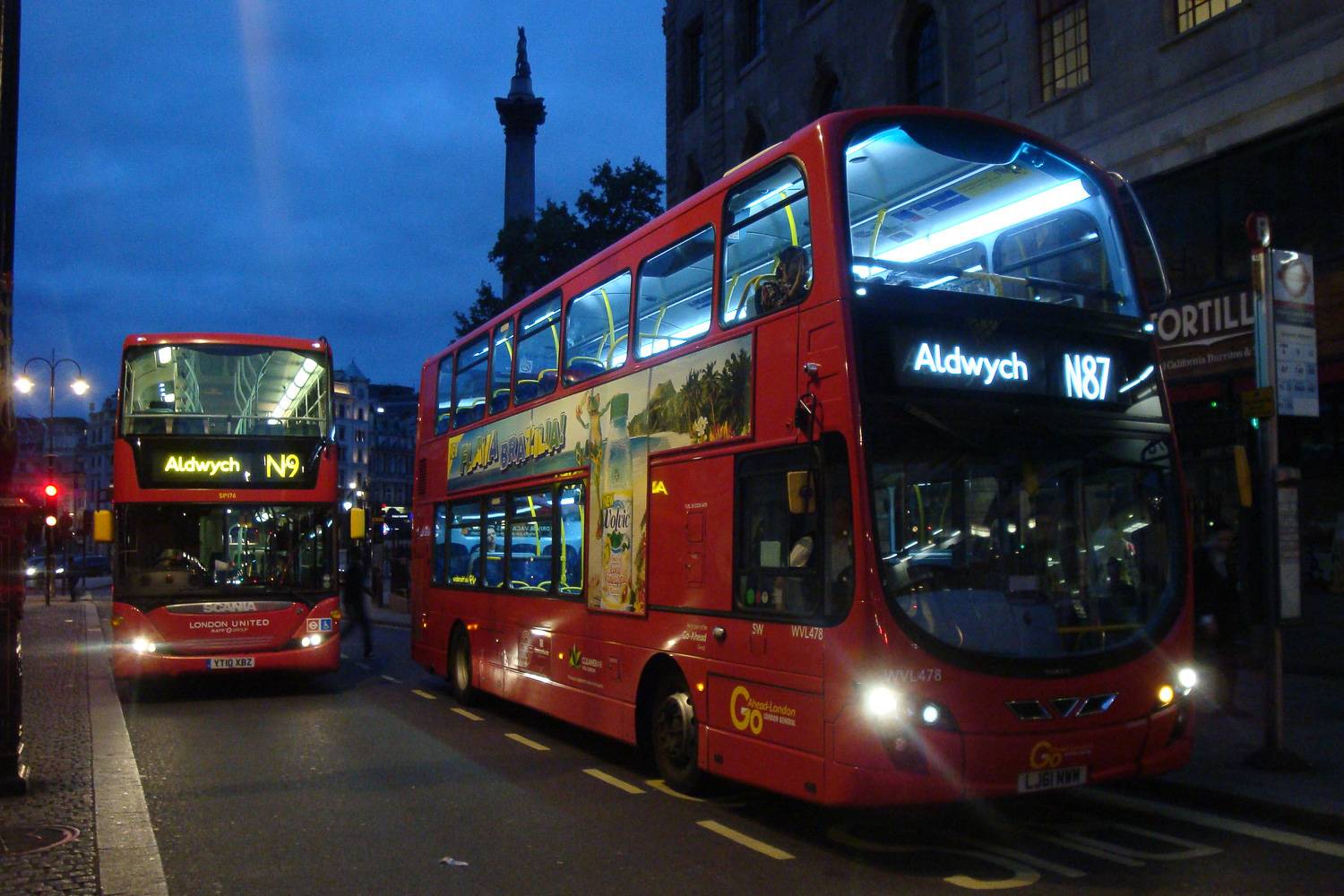
The letter ‘N’ in front of a bus line number indicates that it provides overnight service. (Photo credit: Aubrey Morandarte)
Buses only stop at designated stops along their route, except in certain areas that the driver will announce upon entering. To signal a driver to your stop, press the red signal buttons on posts throughout the bus. Buses also run all night in London. Night service begins at the closure of the Tube and runs until normal daytime bus service resumes. You can identify a night bus by the letter ‘N’ in front of the route number.
London Transportation: Trams
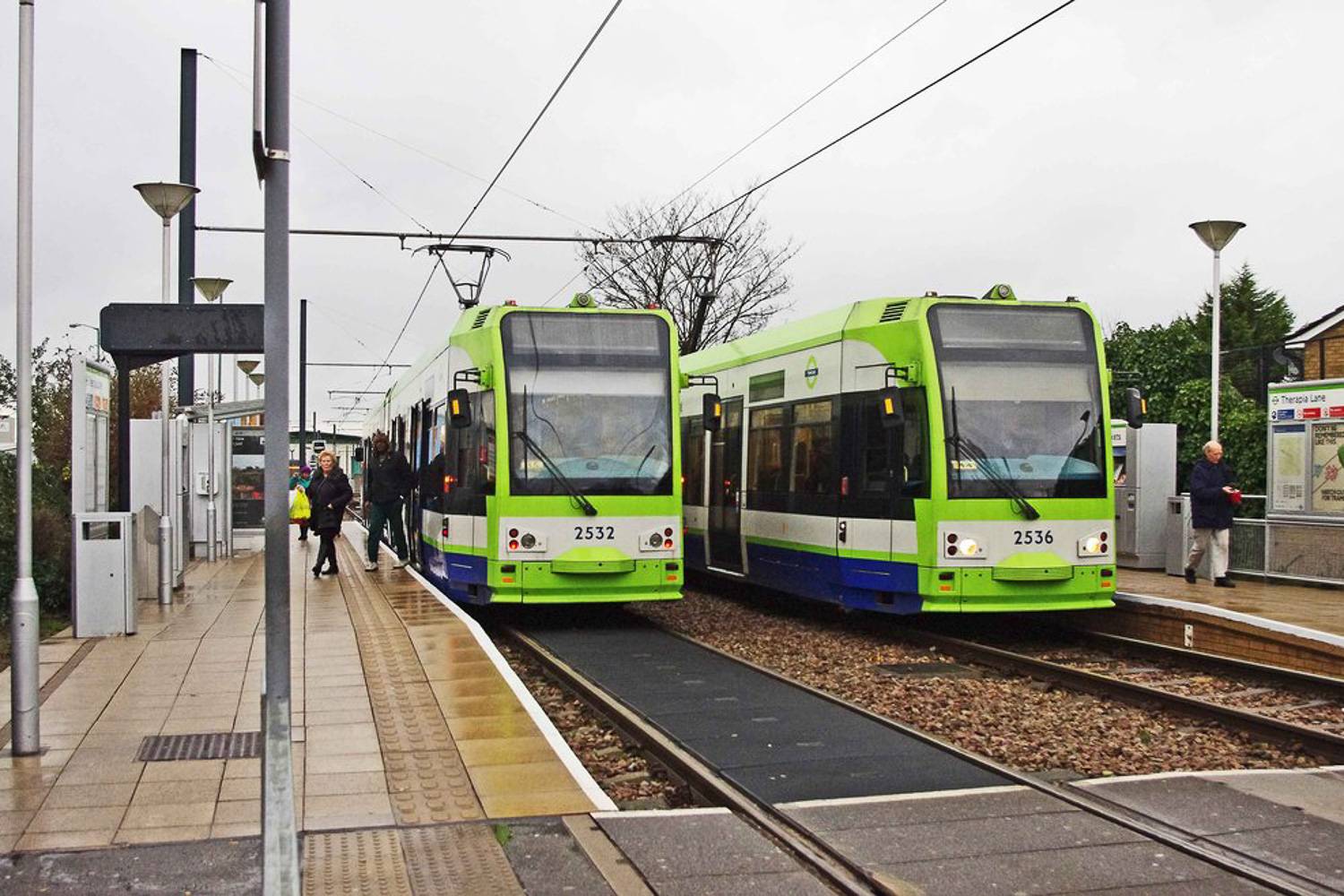
London trams are designated by a green circle and provide service to South London. (Photo credit: P.L. Chadwick)
London’s tram system (also called Tramlink) is a light rail system that serves parts of South London, including Croydon and Wimbledon. Taking the tram can be a convenient option for those who live in South London and are not particularly well-connected by the Underground or Overground, as the tram system connects to the District line on the Tube and several stops on the Overground and National Rail. Tram fares, like buses, are £1.50, so transfers between buses and trams are possible. Trams run between 5:00 a.m. and 1:00 a.m., though some special night tram routes exist.
London Transportation: Overground
The London Overground, as the name implies, is a mostly above-ground rail system that serves suburban London and areas outside the city center. The Overground connects well to the Underground and even Tramlink and the DLR (Docklands Light Rail). There are six lines, and travel on the Overground is similar to the Underground, as fares are determined by zones traveled and can be paid with Oyster cards or contactless payment, and hours run from 5:30 a.m. until about midnight. The Overground is designated by an orange circle logo.
London Transportation: Docklands Light Rail
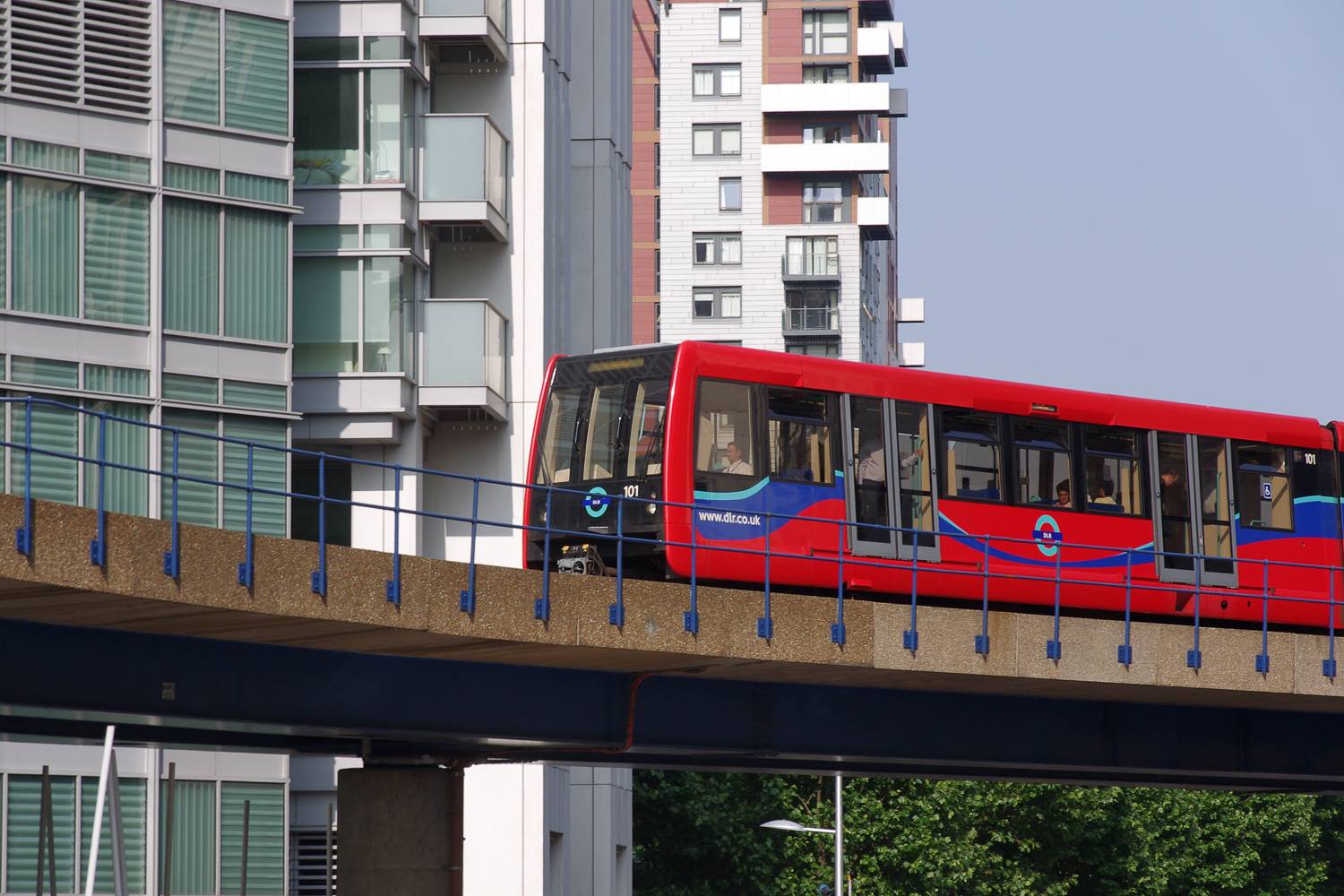
The Docklands Light Rail is a familiar sight as it travels above ground through London’s Docklands.
The Docklands Light Rail (abbreviated DLR) is a train line that connects East London and the Docklands with the London Underground at Bank Station. The DLR has six branches and 45 stations in total, and connects with City Airport (LCY) for easy airport transportation. Like the Underground, the DLR follows the fare zone system. It runs from 5:30 a.m. until 12:30 a.m. Monday thru Saturday, and 7:00 a.m. until 11:30 p.m. on Sundays.
London Transportation: Boris Bikes
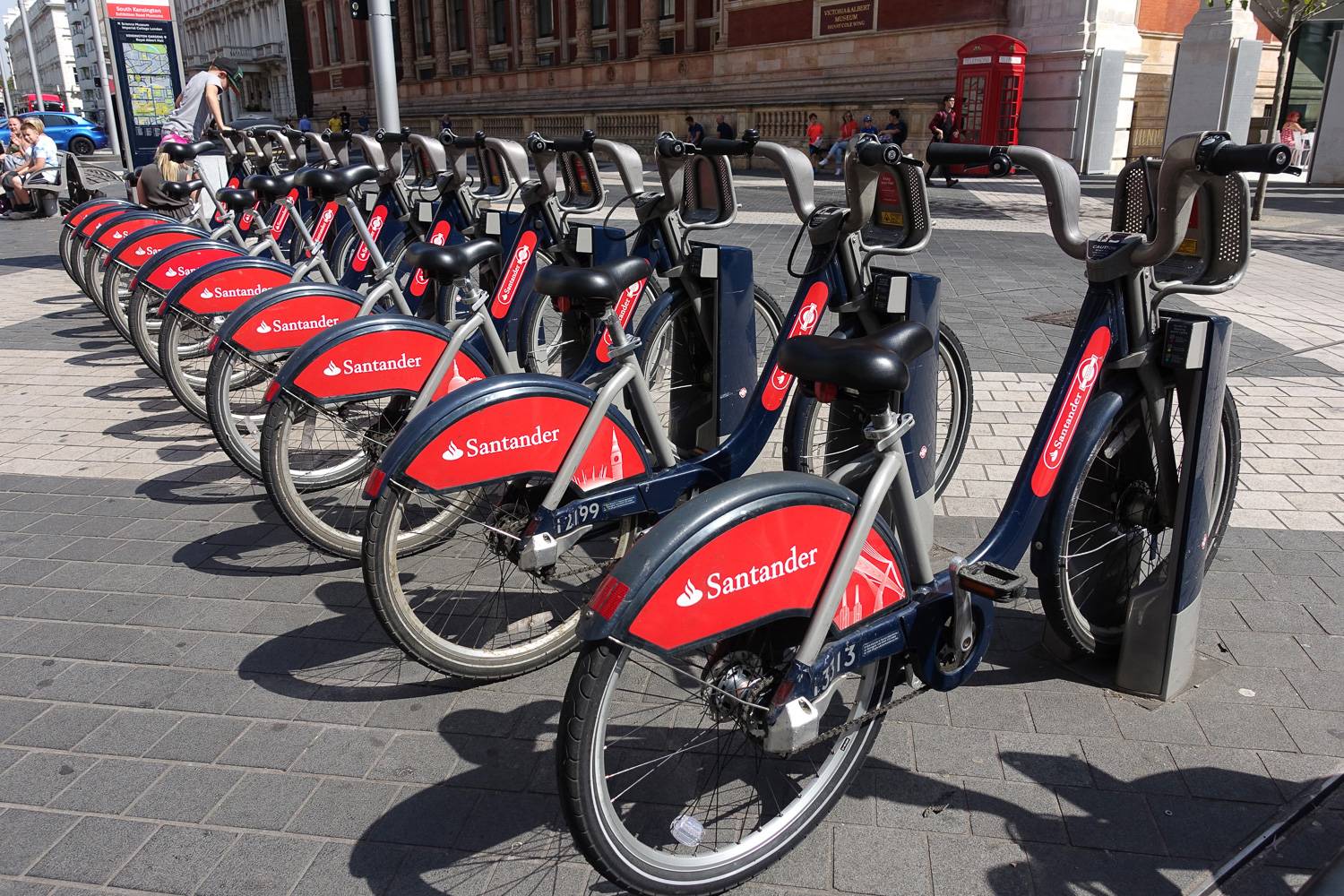
London’s bicycle hire service allows you to travel the city at your own pace and on your own route! (Photo credit: Tiia Monto)
London’s public bicycle hire, formally called Santander Cycles and colloquially known as “Boris Bikes” after Prime Minister and former London mayor Boris Johnson, is an active and flexible way to get around London. Like Paris and New York City’s bicycle hire systems, the bikes are open for use to anyone for a nominal fee (that includes locals and visitors alike!).
It costs £2 for 24 hours of bike access, and the first 30 minutes are free, with an additional £2 charge for each additional half hour. The bicycles are also widely available, with 750 stations and over 11,000 bikes available around the city. If you prefer to get exercise, see the city at your own pace, and/or use more direct and flexible transportation to your destination, biking may be a great option! For families with older children, biking can be a fun London family activity too.
Simplifying London transportation with convenient accommodations
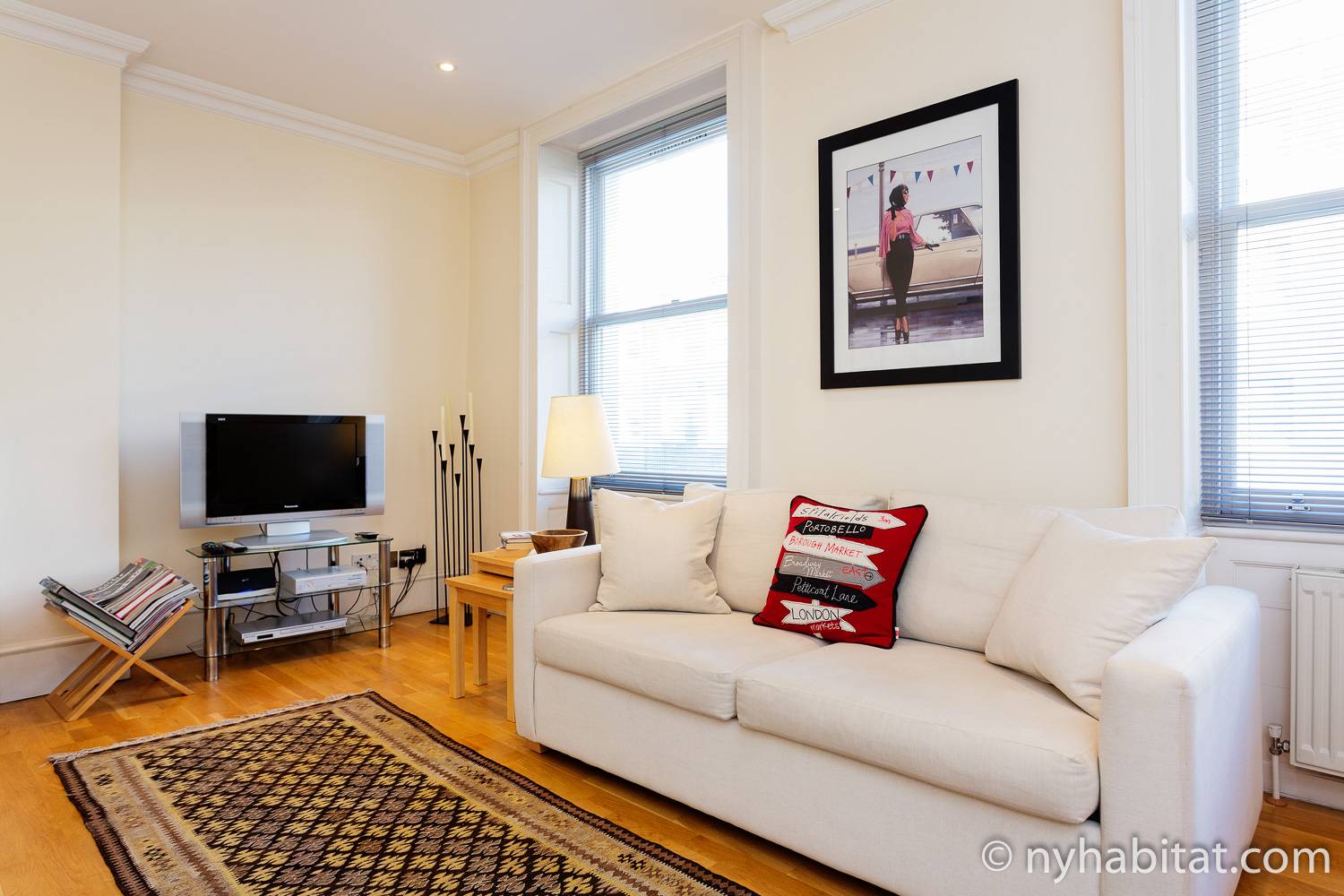
Stylish and flexible furnished apartments all throughout London let you live near the public transportation of your choice! (Rental ID: LN-1968)
With London’s extensive Underground and bus network alongside their specialty transportation systems like the Overground, Tramlink, and DLR, it can seem overwhelming to know which transportation option is the best fit for you. One of the easiest ways to start planning your trip and transportation is by knowing where you’ll be living in the city. Opting to stay in a furnished apartment during your time in London gives you flexibility in price, amenities, and proximity to different forms of public transportation.
What sets New York Habitat apart from other apartment services is our personalized approach to the apartment search. When you get in touch with our London agents, they can help you find an apartment tailored to your individual needs. If staying in Central London is a must, agents can help you find an apartment convenient to easy transportation to work or school. If you’re staying in Greater London, we can easily help you find an apartment near the Overground or Tramlink.
When renting a vacation rental, you’ll have contact with a local host who can give you tips for London transport, and if you’re staying for a longer period of time (one month or more), a furnished apartment rental gives you time to master London’s transportation system like a local! Whatever you choose, you can rest assured that all of our apartment listings come with a detailed description of public transportation in the area so you can plan accordingly.
For more ways to travel smart in London, check out our visitor’s etiquette guide, featuring tips for using the Tube. Our final tip is this: Don’t be afraid to get a bit lost in London. The city is a wondrous place, and the abundance of public transportation means you’ll never be too far from a way home!

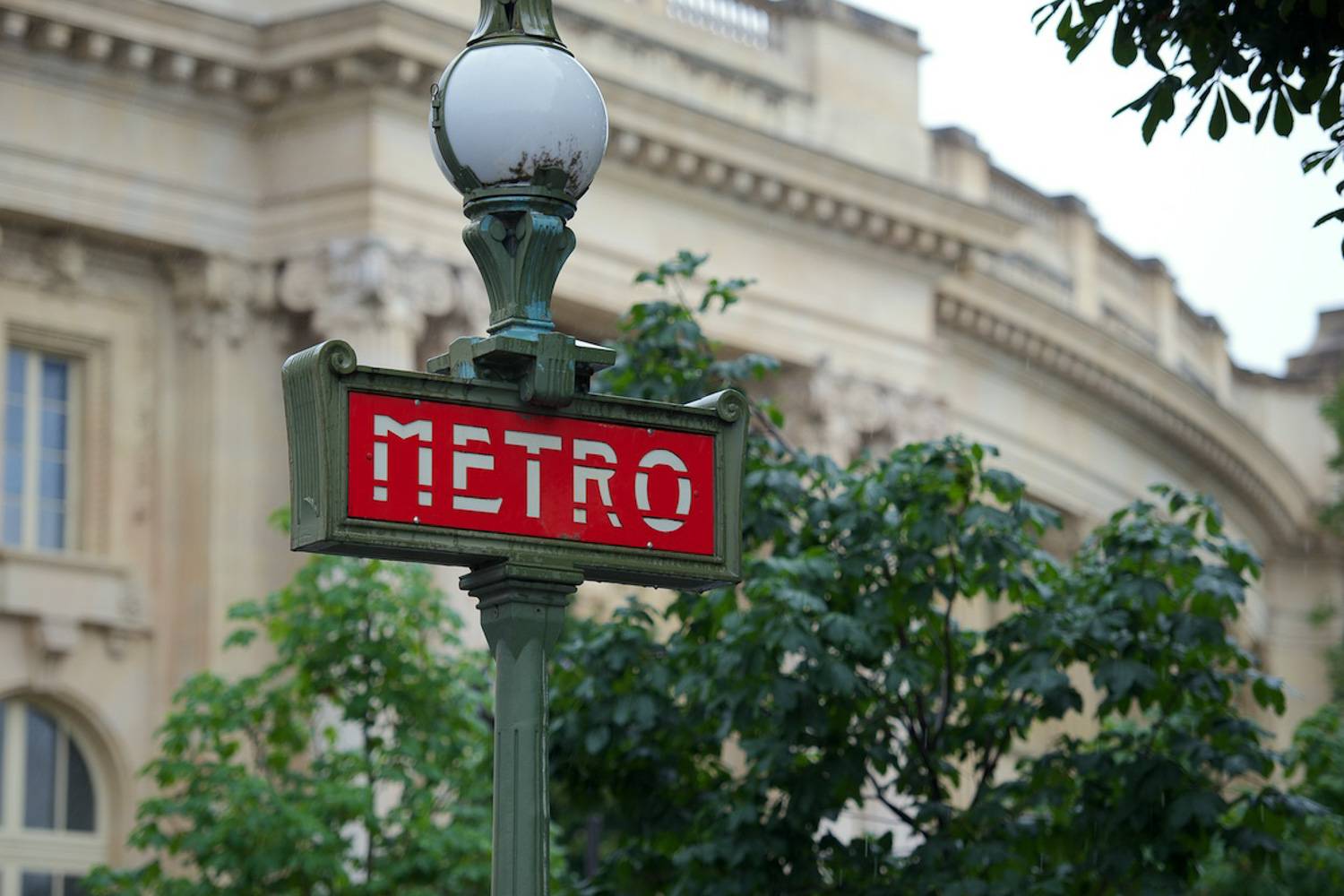
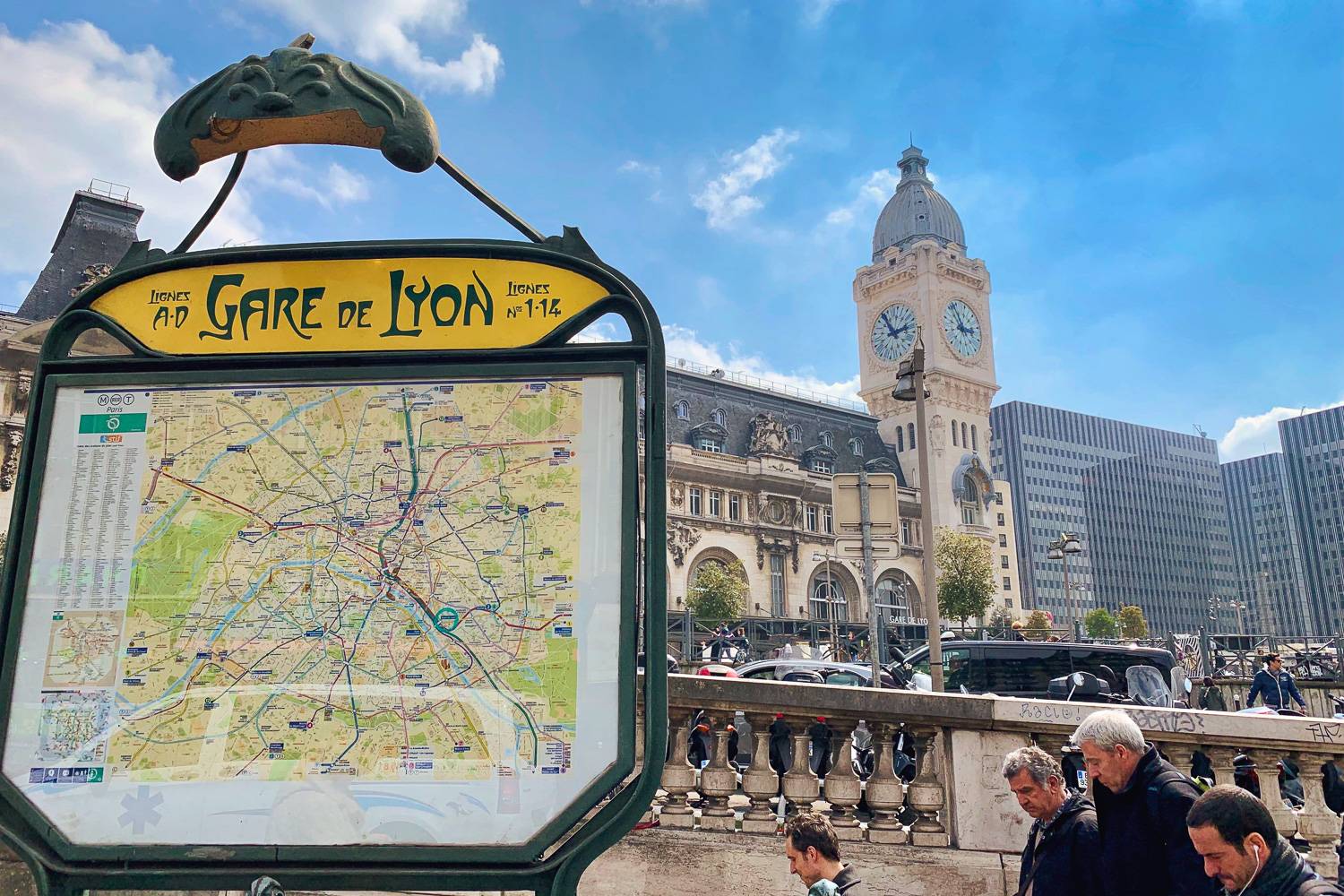
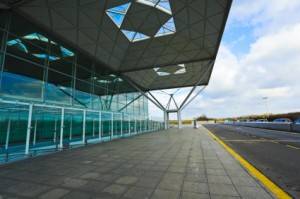
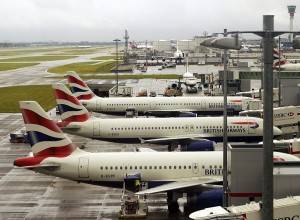
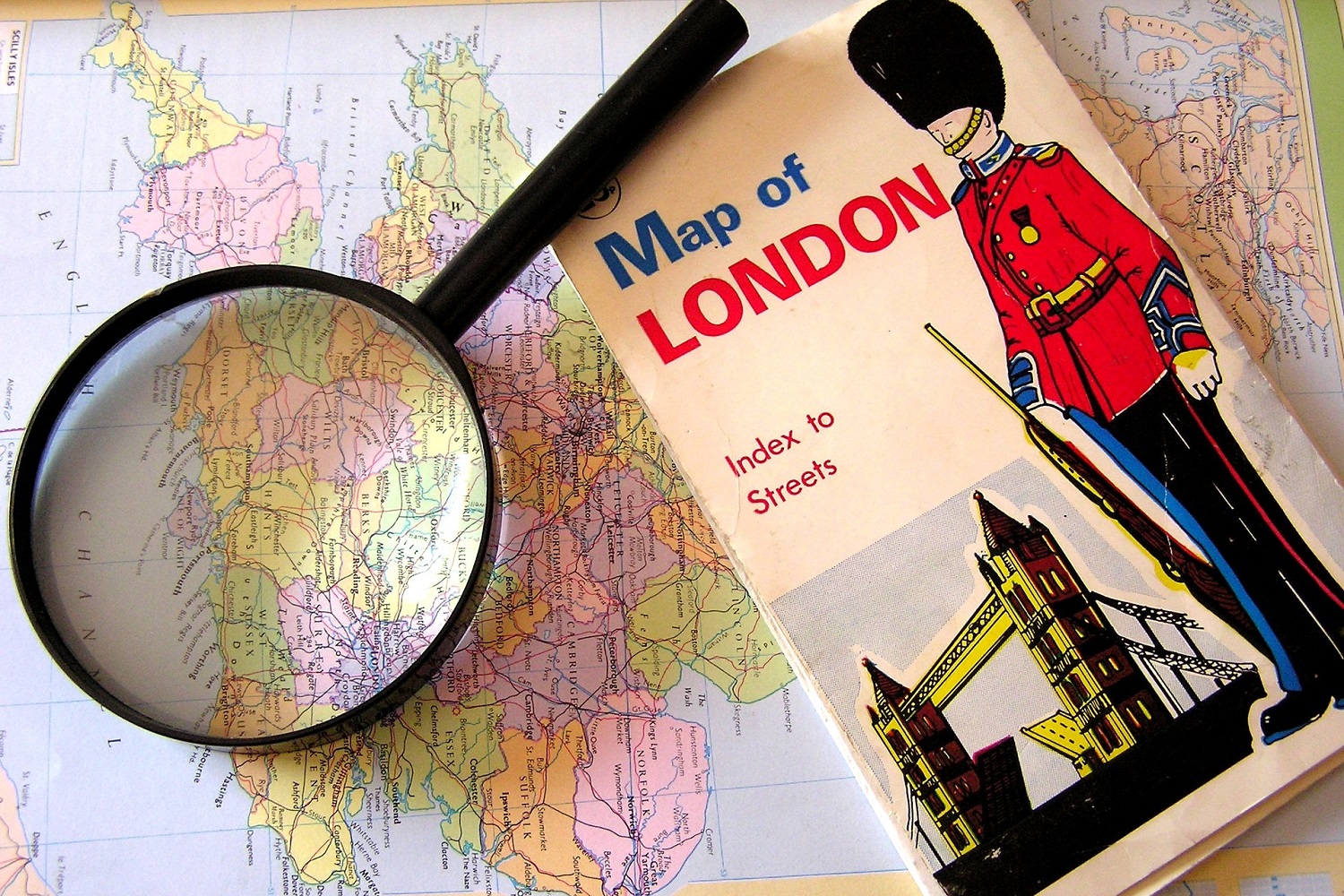
Leave a Reply